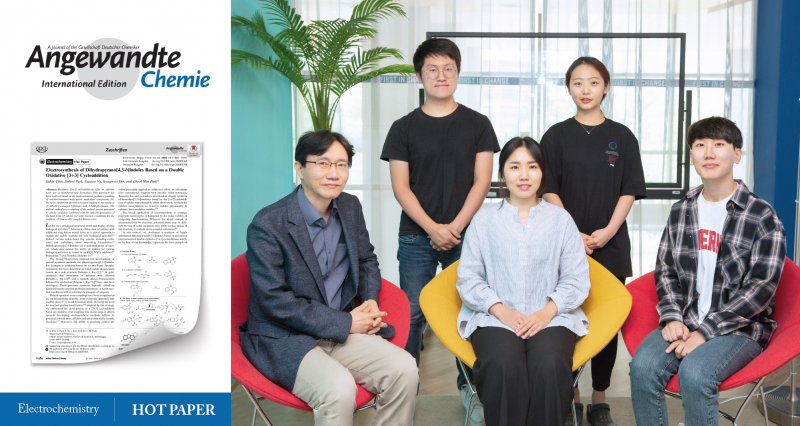Besides searching for novel biologically active compouds for the discovery of new drugs, it is even more important to develop a new, simple synthetic method to produce them. A recent study, affiliated with UNIST has reported a new eco-friendly and low-cost synthetic method for chemical compounds that have potential as pharmaceuticals.
In the study, Professor Cheol‐Min Park and his research team in the School of Natural Sciences at UNIST has reported a new synthetic method to produce indolopyran, one type of nitrogen ring compound, with the use of clean electricity. The new synthetic method promises to be safer, more economical and more environmentally friendly than traditional ones.
Nitrogen ring compounds are contained in about 60% of drugs that are recently approved by the U.S. Food and Drug Administration (FDA). These compounds are made from a series of carbon atoms that are linked together to form a complete ring with a nitrogen atom sandwiched between them. The addition of functional groups to these compounds allows for the synthesis of new drug discovery. The difficulty of such synthesis depends upon the ring shape and the type of functional groups. Indolopyran, which has drawn attention of many researchers due to its anticancer and anti-inflammatory effects, has so far been quite difficult to synthesize There is currently no best method to synthesize this, as the synthesis for indolopyran requires a base and a metal catalyst, and it occurs only at high temperatures.
![Previously developed synthetic methods and bioactive [2,3]‐fused indoles.](http://news.unist.ac.kr/wp-content/uploads/2020/09/untitled.png)
Previously developed synthetic methods and bioactive [2,3]‐fused indoles.
“Unlike the conventional synthesis method, which mainly uses only one pole, we were able to successfully synthesize the complex structure of indolopyran, using both the reactions for cathodes and anodes,” says Subin Choi (Combined MS/PhD in the Department of Natural Sciences, UNIST), the first author of the study.
Density functional theory (DFT) calculations were also performed to obtain an in‐depth understanding of the reaction mechanism, as well as the principles of formation of indolopyran. Their findings suggest that iodine and oxygen are oxidized or reduced at the electrodes (cathode and anode) in order to generate iodine radicals and superoxide radicals. And this leads to the formation of superoxide as the base.
Based on the discovery, the research team applied the same method to synthesize the scaffolds of dihydrofuran. Through the use of enamine as the starting material, instead of indoles, they successfully synthesized dihydrofurants, in which the oxygen is incorporated in the pentagonal carbon rings formed.
“The new method promises to be safer, more economical and more environmentally friendly than the existing synthesis methods,” says Professor Park. “With this, it will be possible to develop a process for producing bioactive substances in large quantities.”
The findings of this research have been published in the July 2020 issue of Angewandte Chemie International Edition. It has been also featured as one of the Hot Paper in the issue. This study has been supported by the National Research Foundation of Korea.
Journal Reference
Subin Choi, Jinhwi Park, Eunsoo Yu, et al., “Electrosynthesis of Dihydropyrano[4,3‐b]indoles Based on a Double Oxidative [3+3] Cycloaddition,” Angewandte Chemie, (2020).












